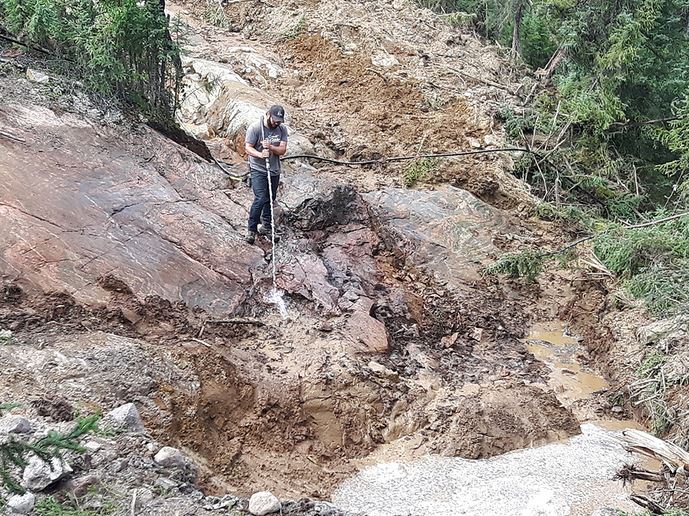Appia aims for REE producer status at Alces Lake


Appia Energy Corp. [API-CSE; APAAF-OTCQB; AOI-FSE] has released some impressive analytical results from surface channel samples collected from the Wilson Zone as part of a recently completed exploration program carried out at the Alces Lake property in northern Saskatchewan.
Highlights include results from line 10, which returned 14.35 wt% total rare earth oxide (TREO) over 4.75 metres. Other notable results include 14.47 wt% TREO over 3.55 metres from line 5 and 10.54 wt% TREO over 4.48 metres from line 13.
These results compare favourably with previous results reported from the Charles Zone, which returned a maximum of 14.90 wt% TREO over 5.1 metres, the company said in an October 29, 2018 press release.
Appia shares jumped to a high of 29 cents on Monday October 29, the day that the results were released. On Tuesday, investors appeared to be taking some profits off the table, sending the shares down 12% to 22 cents. The 52-week range is 32 cents and 11 cents.
Additional assay results for the 2018 surface channel samples at the Bell, Dante, Dylan and Ivan zones, and the assay results of samples from the 15 drill holes are still pending. They will be announced in the coming weeks as soon as they are received an analyzed by the company.
“These results obtained so far from the Wilson Zone and Charles Zone surface channel samples continue to demonstrate that the Alces Lake property is an emerging world-class high-grade rare earth element deposit endowed with high concentrations of critical rare earths required for the permanent magnet industry,” said James Sykes, Vice-President, Exploration and Development at Appia.
The REE grades that the company is seeing at the Alces Lake Project are comparable, if not better than Lynas Corp. Ltd.’s Mt. Weld deposit in Australia, which accounts for 15% of global production in 2017.
Appia is currently putting its focus on the uranium and rare earth element sectors. It is aiming to delineate high-grade critical rare earth elements and uranium on the Alces Lake property. It is also prospecting for high-grade uranium in Saskatchewan’s prolific Athabasca Basin on its Loranger, North Wollaston and Eastside properties.
Appia’s plan is to move the Alces Lake Project forward and eventually emerge as Canada’s first official REE producer,
The 17 rare earth elements have tongue-twisting names such as dysprosium, neodymium, and yttrium. Rare earths are more plentiful in the earth’s crust than the name suggests. They are used in the production of high-performance magnets, catalysts, alloys, glasses and electronics.
China, by far the world’s leading producer, has cracked down on its rare-earth mineral production sector due to resource depletion and environmental concerns. Another aim is to move Chinese manufacturers up the supply chain so that they can sell finished goods rather than just the raw materials.
Appia said the Alces Lake property encompasses some of the highest-grade total and critical REE mineralization in the world, hosted within seven surface showings that remain open in all directions.
